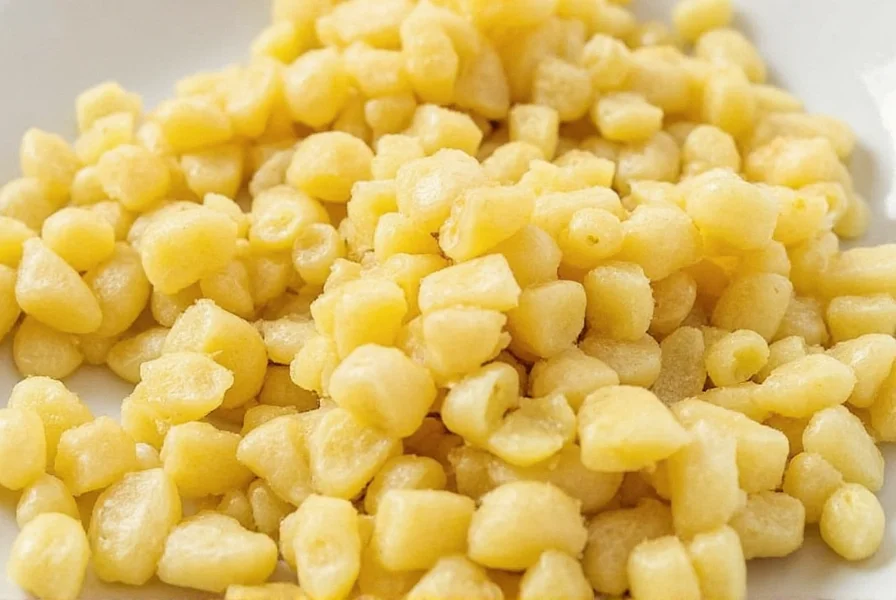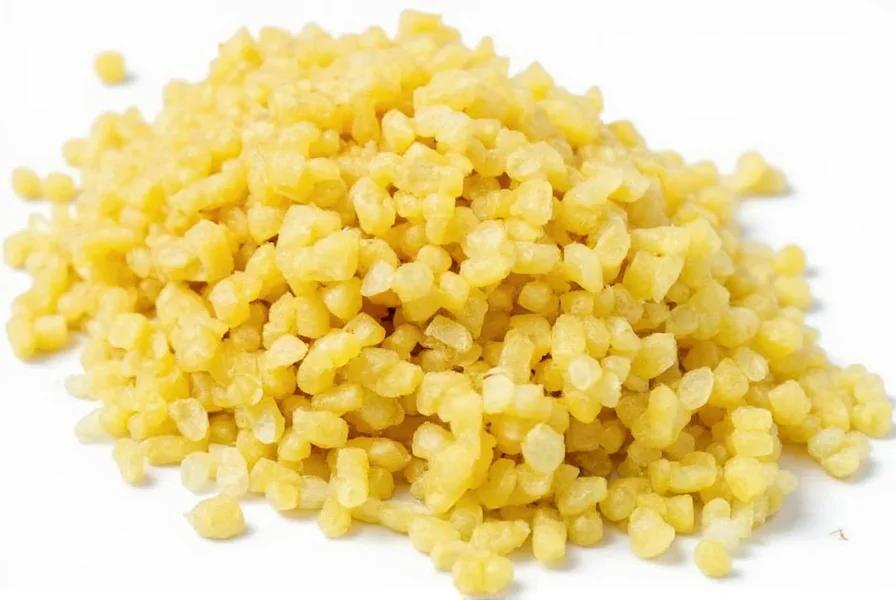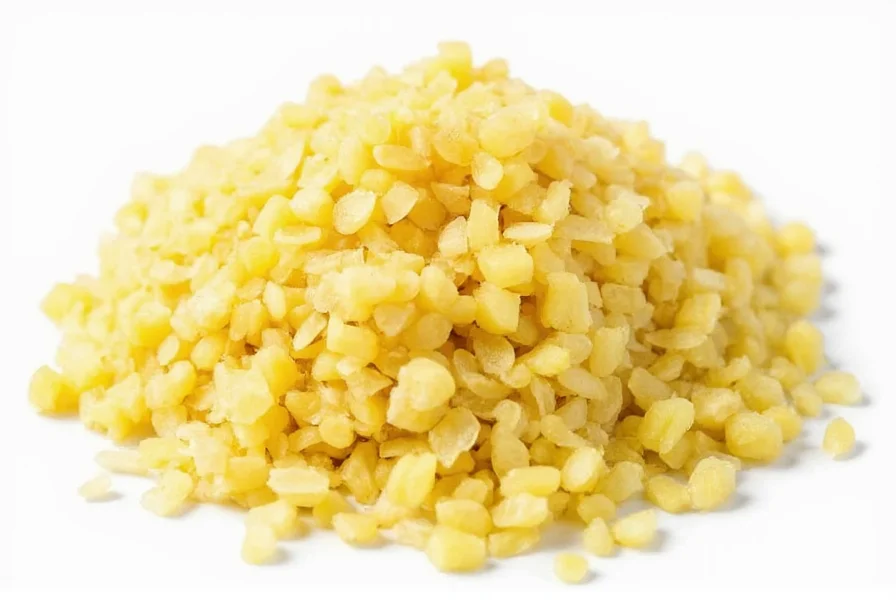When exploring minced ginger root vs fresh ginger, understanding the practical differences can transform your cooking experience. This versatile ingredient offers home chefs and professional cooks alike a time-saving alternative while maintaining the complex flavor profile that makes ginger so valuable in global cuisines.
What Exactly Is Minced Ginger Root?
Minced ginger root refers to ginger rhizome that has been finely chopped or pureed, then preserved in liquid (usually its own juice or vinegar). Unlike powdered ginger, which undergoes drying and loses some volatile compounds, minced ginger retains the fresh flavor profile while offering extended shelf life. Most commercial products contain 100% ginger with no additives, making them suitable for various dietary preferences.

Minced Ginger Root Substitution Ratios
Understanding proper minced ginger root substitution ratio is crucial for recipe success. The moisture content differs significantly between fresh and prepared ginger, affecting flavor intensity and liquid balance in dishes.
| Minced Ginger | Fresh Ginger Equivalent | Best For |
|---|---|---|
| 1 teaspoon | 1 tablespoon grated | Sauces, marinades, dressings |
| 1 tablespoon | 3 tablespoons grated | Stir-fries, soups, braises |
| 2 tablespoons | ¼ cup grated | Baking, spice blends |
Practical Cooking Applications
Mastering how to use minced ginger in cooking opens up numerous culinary possibilities. Unlike fresh ginger that requires peeling and grating, minced ginger root delivers consistent flavor with minimal preparation time. For optimal flavor release, add minced ginger early in the cooking process when making stir-fries or curries, allowing its essential oils to infuse the dish.
When substituting minced ginger for fresh ginger in baking, reduce other liquids slightly to account for the additional moisture. In marinades, the fine texture of minced ginger penetrates proteins more effectively than larger grated pieces, creating deeper flavor infusion.
Storage and Shelf Life Considerations
Proper minced ginger root storage tips ensure maximum freshness and flavor retention. Unopened jars typically maintain quality for 12-18 months when stored in a cool, dark pantry. Once opened, transfer to an airtight container and refrigerate, where it will remain fresh for 3-4 weeks. For extended storage, freeze in ice cube trays then transfer to freezer bags for up to 6 months.
Always use clean utensils when handling minced ginger to prevent contamination. Discard if you notice any off odors, mold, or significant color changes from its natural pale yellow hue.
Recipe Integration Guide
Successfully incorporating minced ginger requires understanding its concentrated flavor profile. In Asian cuisine applications, add 1-2 teaspoons to stir-fry sauces for four servings. For ginger tea, simmer 1 teaspoon with lemon and honey in 8 ounces of water. When making ginger cookies, substitute 2 tablespoons of minced ginger for ¼ cup fresh grated ginger, reducing milk by 1 tablespoon.

Benefits and Limitations
The primary minced ginger root benefits include convenience, consistent flavor, and extended shelf life compared to fresh ginger. However, it lacks the bright, sharp top notes of freshly grated ginger due to the processing method. For dishes where ginger is the star ingredient (like ginger candies or strong teas), fresh ginger may provide superior flavor complexity.
Consider minced ginger your reliable pantry staple for weeknight cooking, while reserving fresh ginger for special occasions where maximum flavor nuance matters. This strategic approach optimizes both convenience and culinary excellence in your kitchen.
Common Mistakes to Avoid
Many home cooks make errors when using minced ginger root that diminish results. Don't substitute equal volumes of minced and fresh ginger without adjusting for moisture content. Avoid adding minced ginger too late in the cooking process, as it needs time to mellow and integrate flavors. Never use expired product, as the flavor degrades significantly after the recommended storage period.
Conclusion
Understanding minced ginger root as a cooking ingredient bridges the gap between convenience and authentic flavor. By mastering substitution ratios, storage techniques, and proper usage methods, you can consistently achieve professional-quality results in both everyday meals and special dishes. Keep this versatile ingredient in your pantry for quick flavor enhancement that maintains the essence of fresh ginger without the preparation time.
Frequently Asked Questions
How much minced ginger equals fresh ginger?
One teaspoon of minced ginger root equals approximately one tablespoon of freshly grated ginger. This 1:3 ratio accounts for the moisture difference between the two forms. When substituting in recipes, use this ratio and adjust other liquids slightly if needed for optimal results.
Can I use minced ginger instead of ginger paste?
Yes, minced ginger can substitute for ginger paste in most recipes using a 1:1 ratio. Both products have similar moisture content and texture. However, check your minced ginger product for added ingredients, as some contain vinegar or preservatives that might affect flavor compared to pure ginger paste.
Does minced ginger root go bad?
Unopened minced ginger typically lasts 12-18 months in the pantry. Once opened, it should be refrigerated and used within 3-4 weeks. Signs of spoilage include mold, off odors, or significant color changes from its natural pale yellow. For extended storage, freeze in portion-sized containers for up to 6 months.
Is minced ginger as healthy as fresh ginger?
Minced ginger retains most of the beneficial compounds found in fresh ginger, including gingerol, though some volatile compounds may diminish during processing. The nutritional profile remains similar, with both forms offering anti-inflammatory properties and digestive benefits. For maximum health benefits, choose products with no added preservatives or sugars.











 浙公网安备
33010002000092号
浙公网安备
33010002000092号 浙B2-20120091-4
浙B2-20120091-4